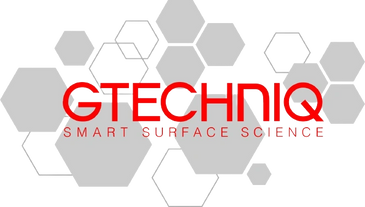Signed in as:
filler@godaddy.com
Signed in as:
filler@godaddy.com

Paint correction refers to the process of removing the imperfections in a vehicle’s finish and restoring it to a better than new finish. These imperfections include but are not limited to, swirl marks, automated car wash marring, fine scratches, water spots, etched bird droppings holograming caused by poor washing techniques.
Don't wait to give your car the care it deserves. Book your appointment with us today and receive a 10% discount on your first detailing service.

Single Stage Paint Enhancement is just that, polishing the paint work in one stage or one step with only one type of polish and pad combination. This is suited to paint work in good condition already that have no real visible swirls and only very minor marring – the Stage 1 or Single Stage Machine Polish involves refining the paint work with a finishing polish and a finishing pad only and is generally not abrasive enough to remove swirl marks and scratches, it is then followed by a wax or paint sealant to protect the paint work.

Two Stage Paint Correction is suited to cars that have moderate swirl marks and light scratches and involves using 2 different polish and pad combinations; the first step is generally a cutting (abrasive) polish or compound to remove imperfections such as swirl marks, light scratches and other moderate paint defects. This is followed by a finishing polish and finishing pad to refine the paint work even further by removing any marring or holograms left by the previous step, it is then followed by a wax or paint sealant to protect the paint work.

Stage 3 Paint Correction is suited to cars that have heavy swirl marks, scratches and other paint defects, it involves using 3 different polish and pad combinations, and this can also include spot wet sanding for heavier scratches. The first step is a heavy cutting compound with a heavy cutting pad to remove those deeper swirl marks and scratches, the second step is a cutting polish and polishing pad to remove further swirls marks followed by the finishing polish and finishing pad to further refine the paint work to a swirl, mar and hologram free finish, it is then followed by a wax or paint sealant to protect the paint work.

At ST6 Detailers, we specialize in transforming your car into a work of art. Our team of experts are trained in the latest techniques and use only the highest quality products to deliver stunning results. Our detailing services include exterior detailing, interior detailing, and ceramic coatings. We take pride in our work and are committed to exceeding your expectations. Trust us to take your car to the next level.

I am here to answer any questions you may have. Uncommon execution with Extraordinary results in the Auto Detailing Industry. Text or Call: (720) 331-1122

STARTING AT $899
FREE Mobile On-site Service! Or in Shop
3-YEAR COATING
BRONZE PACKAGE PRO 9H
THREE YEAR LIMITED WARRANTY
Includes:

STARTING AT $1099
tFREE Mobile On-site Service! Or in Shop
3-YEAR COATING
BRONZE PACKAGE PRO 9H
THREE YEAR LIMITED WARRANTY
Includes:

STARTING AT $1499
FREE Mobile On-site Service! Or in Shop
GOLD PACKAGE PRO 9H
EIGHT YEAR LIMITED WARRANTY
The ULTRA Gold Bundle incorporates our GTECHNIQ ULTRA PRO 9H, this Ceramic
Please reach us at if you cannot find an answer to your question.
Here at ST6 Detailers, we are not only insured, we are certified and highly trained in the ceramic coating formulas our team utilizes. This is precisely how we guarantee the quality of your coating and the certainty that it will protect against the sun, environmental contamination, and more.
All ceramic coatings come in liquid form to start, but after they have been evenly hand-applied to all applicable surfaces, they cure to be the hardest coating a vehicle can experience. The liquid nature of ceramic coatings allow them to fill all microscopic gaps and be easier for our professional team to apply successfully.
The easiest way to explain the reason behind why our ceramic coating packages do not wash away like store-bought waxes and paint sealants is to picture them hanging on to your clear coat with little fingers. The hand-applied liquid coat fills microscopic pockets in your vehicle’s clear coat, and when it cures, the coating is latched to your finish whereas a wax or paint spray sealant only sits on top of your vehicle loosely.
We can coat any type of automobile you either bring to our Denver, Colorado location or that we travel to in Boulder, Castle Rock, Lafayette, or Colorado Springs! All types of vehicles benefit from ceramic coatings in that they prevent mechanical issues by keeping contamination that can rust or damage surfaces from setting up on your exterior.
We love our customers, so feel free to visit during normal business hours.
TEL: (720) 331-1122 Email: info@st6detailers.com
Mon | 07:45 am – 06:00 pm | |
Tue | 07:45 am – 06:00 pm | |
Wed | 07:45 am – 06:00 pm | |
Thu | 07:45 am – 06:00 pm | |
Fri | 07:45 am – 06:00 pm | |
Sat | 09:00 am – 05:00 pm | |
Sun | 09:00 am – 05:00 pm |
Copyright © 2026 ST6 Detailers - All Rights Reserved.
Powered by Strength and Honor
We use cookies to analyze website traffic and optimize your website experience. By accepting our use of cookies, your data will be aggregated with all other user data.